Guizhou is one of China’s most ethnically diverse provinces. Almost 40 percent of the population is non-Han, with the Miao and Dong peoples making up the two most distinctive groups. While Yunnan is famed all over the world for its bounty of minorities, almost nobody seems to visit Guizhou, which makes it an attractive prospect for the adventurous traveler. It also means that it’s quite difficult to traverse, with buses only running between cities. By necessity, most travel is done by hiring a car, with price left down to your skill as a negotiator – and charm. (There’s little to do out in the wilds of Guizhou, and one of our drivers was clearly so delighted to spend a day chatting with expats that he offered to chauffeur us about for free.)
Here are five of our favorite ethnic minority villages in Guizhou:
Xijiang
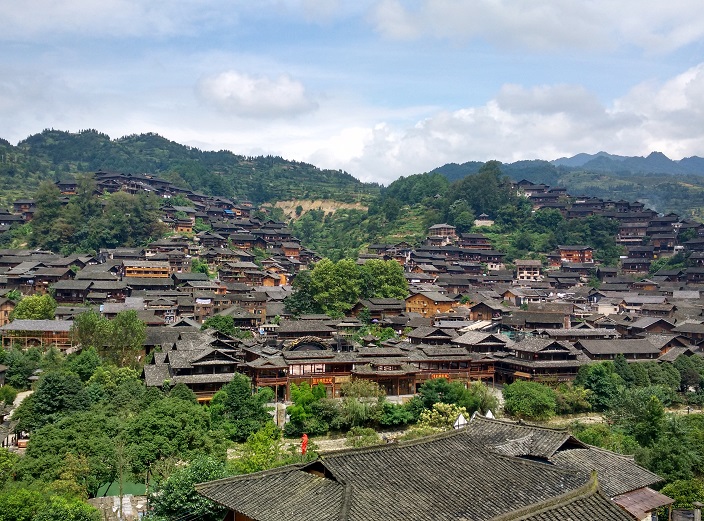
As my travel companion so aptly said, “It’s like Chinese Disneyland.”
Xijiang is purported to be the largest settlement of the Miao ethnic minority in the world and one of the few Guizhou villages that can be reached by direct bus (either from provincial capital Guiyang or the nearer city of Kaili). As such, it’s pretty well known, and our first steps into the town – which costs RMB100 to enter, by the way – are accompanied by a swarm of domestic tourists dragging suitcases along paved streets. Almost all the buildings seem to be selling something or advertising rooms for rent. This is not the spot to go if you’re hoping to escape the masses.
And yet, Xijiang is also really stunning; an enclave of old-fashioned houses built level upon level into lush, green hills. A river runs through the heart of the wooden domiciles, crossed here and there by ornate bridges. Even though it’s clear that the majority of people living in Xijiang thrive on the custom of visitors, one can still see a handful of farmers working the fields, partly no doubt to maintain the myth that this is still an authentic Miao village, but perhaps also out of nostalgia for the days, not so long ago in fact, when life was much simpler – and suitcase-free.
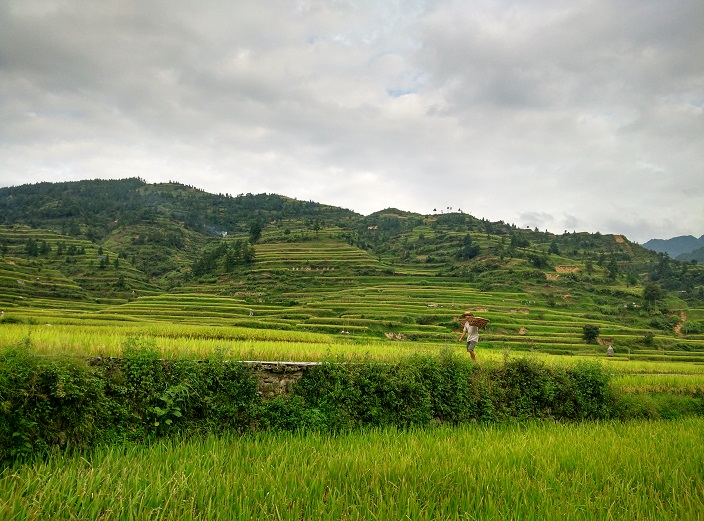
While it may not be an organic experience, Xijiang packs in all the Miao traditions. A food street is lined with closely bunched stalls, each offering a different kind of snack or specialty, from hearty peasant soups to bamboo stalks stuffed with glutinous rice, as well as more universal Chinese favorites like barbecued meat and tofu. Arrayed along one side of the river, wizened women attired in traditional dress sell a mixture of jewelry and fabrics. The Miao are famed for their handicrafts, which offer a more satisfying souvenir than the somewhat soulless song-and-dance routines put on for tourists every day.
There are numerous places to stay in this picturesque town, all fairly cheap, especially once you get off the main roads. Choose one higher up the hillside so you can wake to the breathtaking panorama of the entire town bathed in morning light.
If you want to see Miao culture on a smaller scale, the nearby communities of Matang and Langde are recommended by locals.
Gaozeng, Baba and Xiaohuang
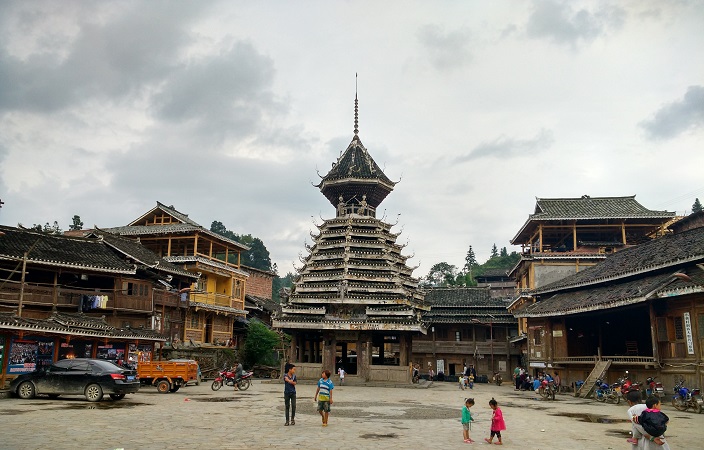
Where the west of Guizhou around Kaili largely consists of Miao habitations, the east is dominated by the Dong ethnic minority. The villages of this people share some architectural similarities with the Miao – like the wind and rain bridges – but are completely unique in the construction of their drum towers. Traditionally, these tiered structures would mark the hours of the day and summon the residents for meetings. Today, they mainly serve as communal areas where people gather to sing, play chess or just gossip.
Three villages are within easy reach of Congjiang, a small ‘city’ (it consists merely of two rows of buildings either side of a river) that has the benefit of being on the high-speed train network and can be reached by bus from Kaili. Gaozeng is the largest and arguably the ugliest. People here seem to be struggling with modernity. Starkly emphasizing this point, a pretty wind and rain bridge is towered over by a concrete highway. Oxen on leashes roam the streets, lending a pastoral air to the ugly electrical wires that dangle between buildings. The drum towers, however, are big and beautiful, the withered painted panels of tigers and dragons maintaining their mystique.
Xiaohuang is also undergoing its own renovations, though the people seem much more content. When we visited, a group of men and women were constructing a house, chattering merrily away in between digging foundations and hoisting bricks. As we learned from a local lad, it’s common for villagers to help one another build homes for free – in return for being invited to a celebratory feast on the completion of the labor, of course. Elsewhere, a new drum tower was in the process of being erected, looming imposingly over the other squat structures.
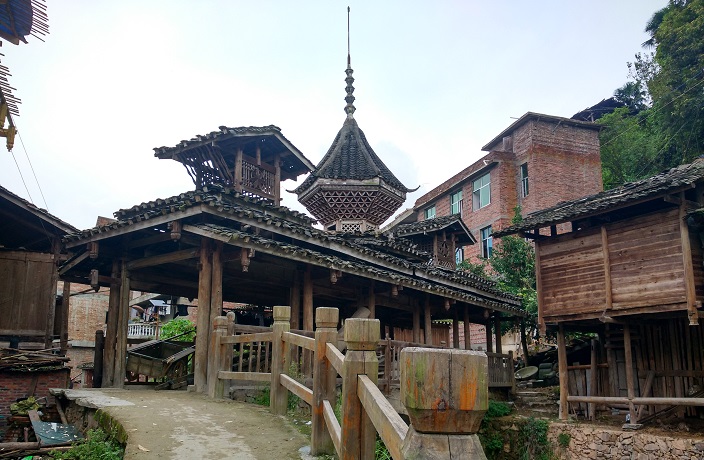
Peeking into some of the homes off the town center, we encountered an elderly man weaving a basket out of reeds. When we asked if we could purchase it, he sat there for a moment, silent, before asking, “What do you want it for?” This was not in a tone of interrogation, but in one of bemusement. He could not fathom why we would covet this quotidian object. Not that he was unwilling to sell – in fact, he afterwards brought us to his wife who was beating pulp into paper with a mallet, asking us if we wanted to buy that, too.
There is a very basic guesthouse in Xiaohuang should you elect to pass the night here rather than returning to Congjiang. Be warned that there is little in the way of food, though watching the village at night provides its own strange amusements.
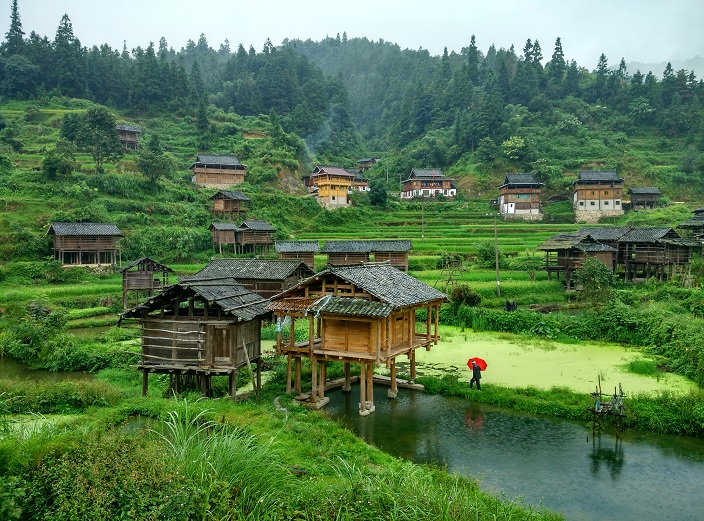
Located between Gaozeng and Xiaohuang, Baba is the most picturesque place we came across on our travels. Framed by fog-crowned hills that are covered in trees, little huts on stilts are interspersed with jade-green ponds. It’s tranquil and idyllic, without the taint of modern commerce – there wouldn't be room for it in this little hamlet, which can be crossed in half an hour, though you’ll want to spend longer dawdling amidst the scenery. The people seemed uninterested in our presence as we snapped photos of a man attending to his crops and a woman engaged in needlework.
There’s a clear generational gap out in these wilds. Most of the elder folk are dressed in black attire, women with hair enfolded in scarves and men in short jackets. Youngsters, however, look no different from the denizens you’d find in any Chinese city – just a little muddier and swarthier.
Basha
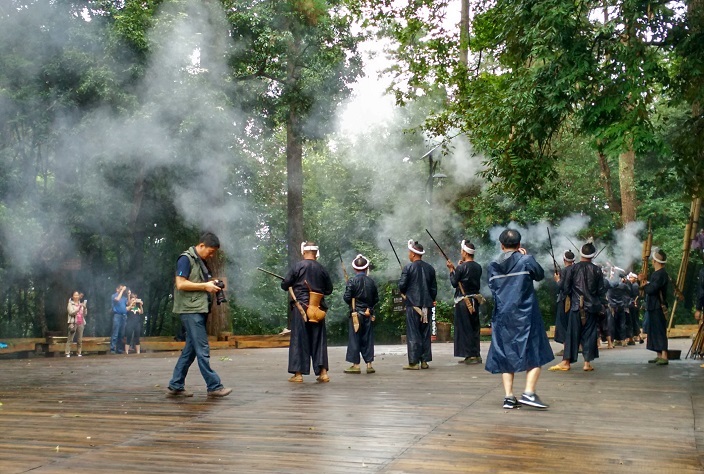
Famed as the last gun-hunters, the denizens of Basha are supposedly the only tribe legally permitted to carry firearms. The lone Miao offshoot in Dong-dominated Congjiang County, visitors are theoretically meant to pay an RMB60 entry fee to the village, entitling you to a gun salute, but this is easy to get around if you don’t mind skipping the rather gimmicky spectacle. Tourists can be seen paying a little extra to fire the weapons themselves – in a country like China with strict gun control, it’s quite the novelty.
Basha and its residents seem caught in a weird time distortion. While it has all the makings of a tourist trap in the mold of Xijiang, the atmosphere feels much more natural. It may have its performances, but most of the people here go about their normal lives without a thought for the occasional bus of domestic visitors who come to peer at their rural livelihood. The buildings, built mostly on the sides of slopes, are quaint and charming – and incredibly simple. In place of gardens, oxen and pigs can be glimpsed inside wooden enclosures.
A Note on Travel
High-speed trains from Guangzhou and Shenzhen to provincial capital Guiyang set off daily and take between five and six hours. From Guiyang, there is a two-hour bus that goes to Xijiang Town. For the more adventurous, overnight trains to Kaili run daily from Guangzhou and Shenzhen, taking between 19 and 20 hours. From there, it’s around an hour on the bus to Xijiang. To reach Gaozeng, Xiaohuang, Baba and Basha, Congjiang is the most convenient starting point. There are several high-speed trains daily between Congjiang and Guangzhou that take just under four hours, but no direct connections with Shenzhen.
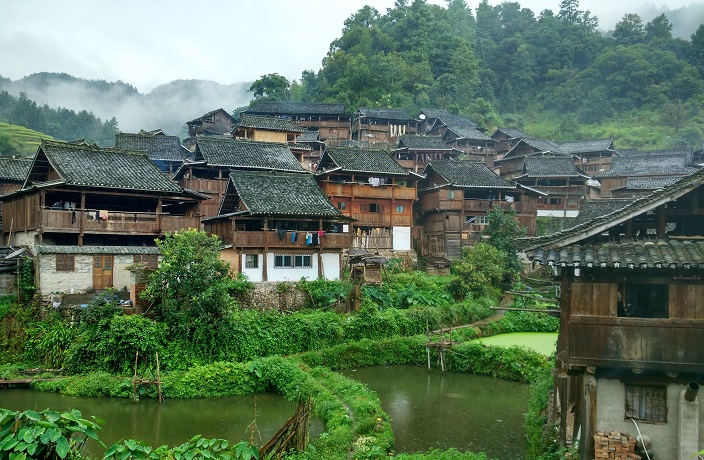




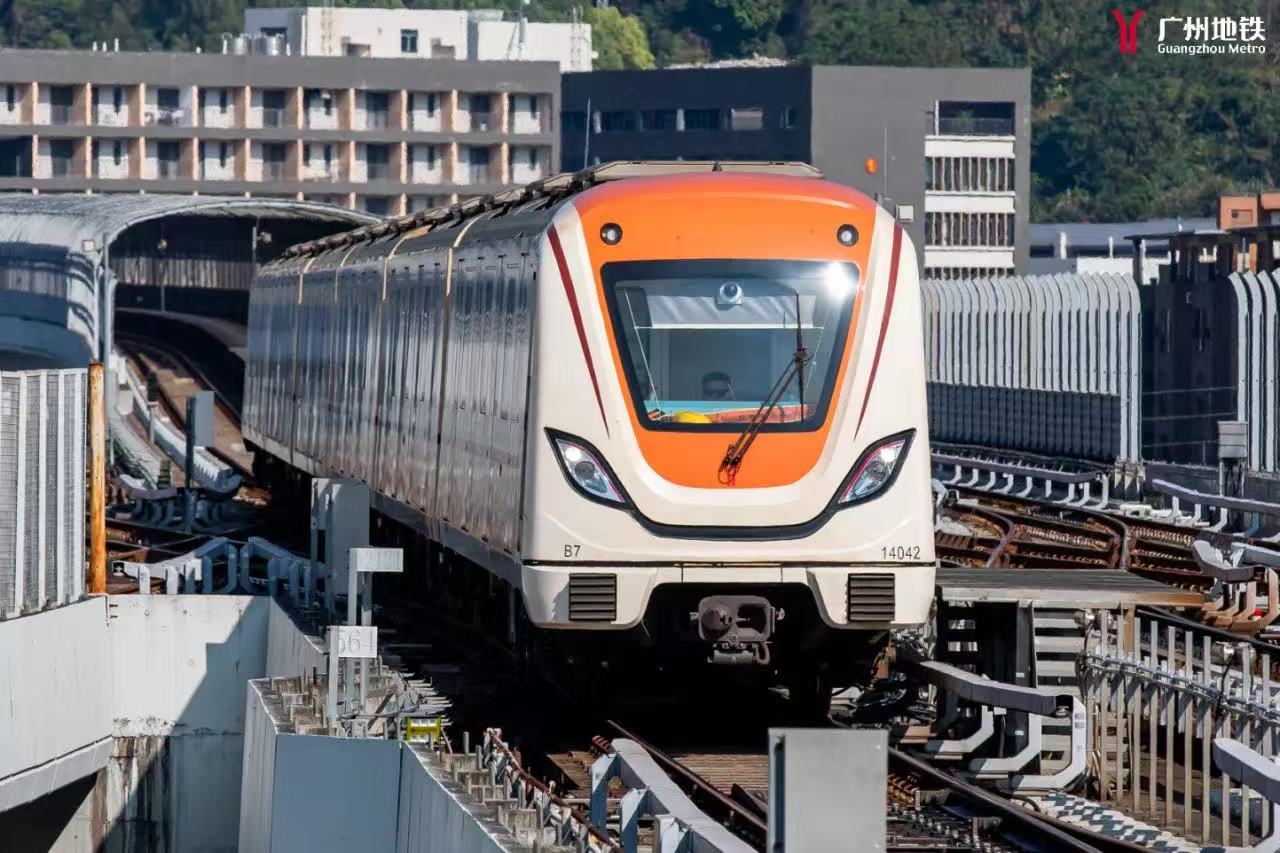















0 User Comments